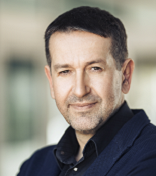Nearing An IL-2, IL-15 Combination Inflection Point

By Matthew Pillar, Editor, Bioprocess Online

In July, SOTIO Biotech launched an aggressive phase 2 basket trial of its lead candidate, the IL-15-targeting SOT101, as monotherapy and in combination with pembrolizumab (Keytruda) in patients with selected relapsed/refractory advanced/metastatic solid tumors.
The trial is aggressive on a few fronts. First, it’s recruiting patients in six indications; non-small cell lung cancer, colorectal cancer, hepatocellular carcinoma, and three additional indications. Second, the company’s plan is to recruit up to 50 patients in each cohort. Third, the multinational trial seeks to recruit patients at seven sites in the U.S. (the Yale and MD Anderson Cancer Centers), France (Institut Gustave Roussy, Centre Léon Bérard, and Institut Claudius Regaud), Spain (Vall d’Hebron Institute of Oncology), and the Czech Republic (Masaryk Memorial Cancer Institute).
IL-15 / IL-2: A Very Competitive Space

Of those, SOTIO CEO Radek Spisek, M.D., Ph.D. tells me three, including SOTIO, are running in the lead pack and approaching a major inflection point. Sanofi, Alkermes, and SOTIO, he says, “Are approaching a value inflection point that will result in responses that determine whether or not IL-2 / IL-15 targeting is the right strategy to follow in cancer immunotherapy.” Those programs, says Dr. Spisek, have optimized dosing for phase 2 programs and are seeing what he considers “interesting” efficacy data. “In our phase 1 program, we tested the combination of our SOT101 IL-15 superagonist in combination with pembrolizumab, and we saw clinical benefits in 15 of those patients,” he says. He characterizes those benefits as significant and long-term tumor shrinkage and, in one patient, complete response. “All three companies have decided to move to larger clinical programs in selected indications to determine whether there is meaningful clinical benefit in strictly-defined patient populations.” For its part, Alkermes has a slight lead with a Phase 3 trial of its Nemvaleukin alfa candidate for ovarian cancer underway.
As for the rest of the dozens in the race, the recent dearth in capital access is exacerbating the competitive situation for IL-15 / IL-2 developers. “It's been extremely difficult for small biotechs at this stage to execute successful financing rounds,” says Dr. Spisek. “I don’t see this improving in the coming months, and I believe the outcome will be a thinning of the market, where we’ll probably see some companies in the IL-2 and IL-15 space leaving the market.”
For its part, SOTIO is well-positioned to ride out the capital crunch, and Dr. Spisek acknowledges the importance of the company’s financial backing from PPF. PPF’s investment in November 2021 ensured about three years of financing to support the biotech’s current programs. “Without question, that’s a huge advantage in the current environment, and I’m grateful for it,” he says.
Residual Pandemic-Induced Recruitment Challenges Remain
If the company’s patient recruitment experience with its CAR T-cell therapy BOXR1030 is any indication, building cohorts across six indications for the SOT101 trial might prove an early challenge. Dr. Spisek tells me patient recruitment for its BOXR1030 program remains an arduous task, particularly in the U.S. “We have started the manufacturing of our CAR T-cells for that program, but for the moment we’re having issues with the recruitment,” he says. “The capacity of U.S. sites to recruit patients to start new trials remains impacted by the COVID situation, in large part due to a shortage in clinical staff.” At the time we spoke in mid-August, the trial had been approved and two U.S. clinical sites had been chosen, but no patients had yet been recruited.
“This presents a little more complexity to our clinical operations team, because they’re responsible for ensuring that we have enough sites and that we’re able to recruit all the cohorts,” says Dr. Spisek. “With respect to the regulatory interaction, it’s been extremely smooth. The FDA and the EMA have been very helpful. They understand the concept, that we’re seeking to explore the potential of the molecule comprehensively, in multiple relevant oncology indications,” he says. “There have been no issues with respect to reviewing the protocol and the data.”
While the company acknowledges the recruitment challenges, it has a track record of recruitment success. In 2021, SOTIO managed to initiate its first antibody-drug conjugate trial of SOT102 targeting Claudin18.2 in gastric and pancreatic cancer patients. The first of those patients was dosed in April 2022.
An Immune-Oncology Inflection Point Is Imminent
The next 18 to 24 months will reveal the viability and potential of the IL-15/IL-2 field. “I personally believe we will have answers — whether we have compounds with significant clinical benefit, and whether we then take it forward into the registration trial or not – in that timeframe,” says Dr. Spisek. “I think the hypothesis of stimulating the immune system using IL-2 and IL-15 compounds is a valid one. All the preclinical data points in the right direction. Clinical data from phase one trials in combination with checkpoint inhibitors points in the right direction. These larger, more robust clinical studies will determine whether there are enough efficacy signals to move into registrational trials.”
Learn more about SOTIO at www.sotio.com.
